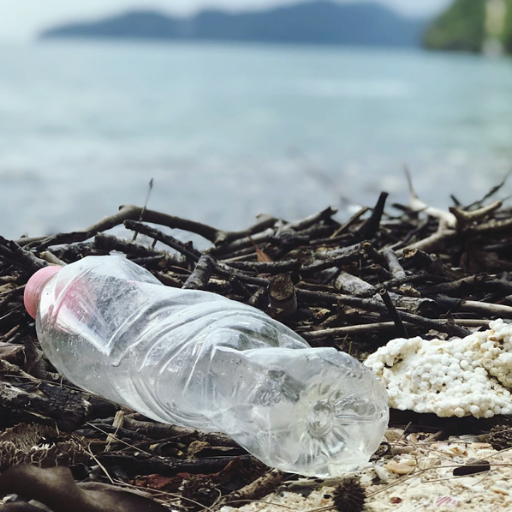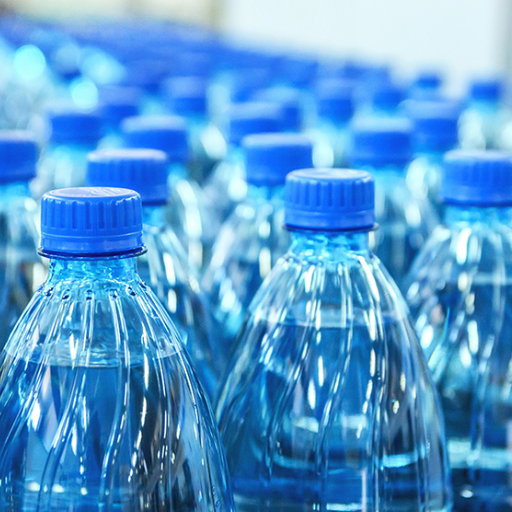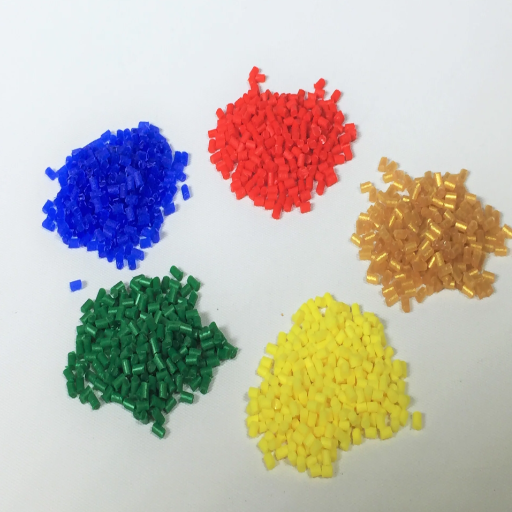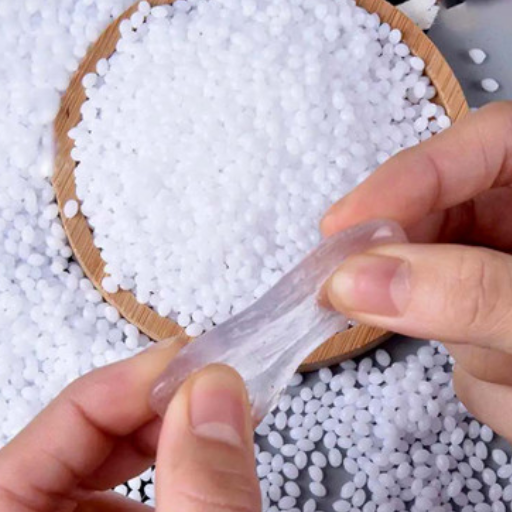Plastic has become an inescapable part of our daily lives, from packaging materials and household items to medical equipment and electronics. However, its convenience comes at a significant cost – not just to the environment, but also to human health. This blog post explores the multifaceted impact of plastic on human well-being, breaking down how it enters our systems, the potential short- and long-term health risks, and the role harmful chemicals such as phthalates and bisphenol A (BPA) play. By examining current research and global efforts to mitigate these risks, we aim to provide a comprehensive understanding of why the health implications of plastic consumption and exposure deserve far more attention than they often receive.
What Are the Harmful Effects of Plastic on Human Health?

Plastics release toxic chemicals like phthalates and bisphenol A (BPA) when they degrade, many of which are endocrine disruptors. These chemicals can interfere with hormonal balance, potentially leading to reproductive issues, developmental delays, and increased risks of certain cancers. Microplastics, which result from the breakdown of larger plastic products, are often ingested through food, water, or air, and their long-term health impacts are still being studied but may include inflammation, cellular damage, and impacts on gut health. Prolonged exposure to plastic-related toxins has also been linked to neurotoxicity, immunity issues, and chronic diseases, spotlighting the urgent need for action.
How Do Chemicals in Plastic Affect Our Bodies?
Chemicals in plastics, such as bisphenol A (BPA) and phthalates, can disrupt endocrine function by mimicking or interfering with hormones in the body. This disruption has been linked to reproductive issues, developmental problems, and metabolic disorders like obesity and diabetes. Additionally, exposure to plastic additives can provoke oxidative stress and inflammation, potentially leading to chronic health conditions such as cardiovascular disease and certain cancers. Emerging research also highlights concerns over microplastics, which are ingested or inhaled and may accumulate in body tissues, potentially causing cellular damage, immune responses, and gut microbiome imbalances. Addressing these risks requires reducing plastic use, improving recycling systems, and advancing safer alternatives.
Can Plastic Pollution Lead to Long-Term Health Risks?
Yes, plastic pollution poses significant long-term health risks. Microplastics, tiny plastic particles resulting from plastic degradation, have been detected in water, air, food, and even human tissues. Their presence can trigger oxidative stress, inflammation, and an array of cellular damage. Some plastics contain toxic additives like phthalates and bisphenol A (BPA), which are known endocrine disruptors, potentially leading to hormonal imbalances and reproductive issues. Furthermore, the burning or breakdown of plastics can release harmful chemicals, increasing the risk of respiratory diseases, cancers, and other chronic conditions. Mitigating these risks demands global efforts to reduce plastic dependency, enhance waste management practices, and innovate safer, biodegradable materials.
What Role Does Exposure to Plastic Play in Chronic Illnesses?
From my research, exposure to plastic can contribute significantly to chronic illnesses. Chemicals like Bisphenol A (BPA) and phthalates, commonly found in plastics, disrupt endocrine function, which may lead to long-term hormonal imbalances and conditions like diabetes and infertility. Additionally, microplastics found in food, water, and air can accumulate in the body, potentially triggering inflammation and oxidative stress, which are linked to cardiovascular diseases and certain cancers. Studies emphasize that prolonged exposure to these substances exacerbates health risks, making it crucial to minimize plastic use in everyday life and push for safer alternatives.
How Does Plastic Pollution Impact the Environment?

Plastic pollution has far-reaching consequences for the environment, affecting ecosystems on both land and in water. Plastics take hundreds of years to degrade, leading to the accumulation of waste that harms wildlife and disrupts natural habitats. Marine life is particularly vulnerable, as animals often ingest or become entangled in plastic debris, resulting in injury, starvation, or death. Furthermore, as plastics break down into microplastics, they infiltrate soil and water systems, spreading pollutants and affecting the health of organisms across the food chain. This persistent contamination not only threatens biodiversity but also undermines the balance of ecosystems globally.
What Is the Scope of the Plastic Pollution Crisis?
The plastic pollution crisis is a global environmental emergency, with over 400 million tons of plastic being produced annually, much of which is single-use and ends up as waste. An estimated 11 million tons of plastic enter the oceans each year, disrupting marine ecosystems and threatening wildlife. On land, plastic waste clogs waterways, infiltrates soil, and degrades into microplastics, which are now found in air, water, and even food. This pervasive pollution impacts over 800 species of animals and poses serious health risks to humans due to toxic chemicals released during plastic production and breakdown. Without intervention, plastic waste in oceans alone could triple by 2040, exacerbating biodiversity loss and climate change.
How Does Plastic Waste Affect Wildlife and Ecosystems?
Plastic waste severely disrupts wildlife and ecosystems in numerous ways. I’ve found that animals often mistake plastic for food, which leads to ingestion, blockages, malnutrition, and even death. Marine life, in particular, is heavily impacted as creatures like turtles, seabirds, and fish ingest or become entangled in plastic debris. This not only harms individual species but also destabilizes food webs and ecosystems. Additionally, the toxic chemicals leached from decomposing plastics contaminate soil and water, affecting plant growth and reducing habitat quality. It’s alarming to see how pervasive the problem is, with microplastics infiltrating every aspect of the environment, putting both wildlife and ecosystems under immense stress.
Can Recycling Mitigate the Impacts of Plastic?
Recycling plays a crucial role in reducing the impacts of plastic, but it is not a standalone solution. By recycling plastic, we can lower the demand for virgin materials, reduce greenhouse gas emissions, and limit the amount of waste entering landfills and natural environments. However, the effectiveness of recycling is hindered by challenges such as low recycling rates, contamination of recyclable materials, and the complex nature of plastic waste, with many types being non-recyclable. Globally, only about 9% of plastic is successfully recycled, underscoring a critical need for more robust systems and better consumer education. While recycling is an important step, it must be combined with reduced plastic consumption, improved product design, and investments in alternative materials to truly mitigate the environmental effects of plastic pollution.
Are There Toxic Chemicals in Plastic That Are Harming Human Health?

Yes, many plastics contain toxic chemicals that can harm human health. Chemicals such as bisphenol A (BPA), phthalates, and flame retardants are commonly used in plastic production and can leach into food, drinks, and the environment. These substances are linked to a range of health issues, including hormonal imbalances, developmental problems, and increased risks of chronic illnesses like cancer. Prolonged exposure to these chemicals, especially in vulnerable populations such as children, underscores the importance of reducing plastic use and opting for safer alternatives.
What Are the Most Dangerous Chemicals Found in Plastic?
A number of chemicals utilized in the creation of plastics are of grave concern in regard to health and environmental safety. These include:
Bisphenol A (BPA): Known to imitate estrogen, BPA can disrupt the endocrine system. It is often found in polycarbonate plastics and epoxy resins. It is known to cause fertility issues, developmental delays in children, and increase the risks of cardiovascular disease after prolonged exposure.
Phthalates: These are harmful chemicals that may alter the endocrine system and reproductive health. Often, they are added to plastics in order to increase flexibility. Studies trace back developmental issues, asthma, and metabolic disorders like obesity and diabetes to them.
Polyvinyl Chloride (PVC): Commonly used in pipes, packaging and household items, PVC contains toxic additives such as lead, cadmium, and organotins. They pose serious neurological and respiratory health risks, given that they have the potential to leach out over time, particularly when heated.
The above listed chemicals pose serious health risks that can be mitigated by reducing exposure. To minimize these risks, the use of BPA containing products should be avoided, plastics bearing recycling codes 3 and 7 should be shunned, and natural non-toxic materials should be used instead whenever feasible.
How Are Plastic Additives Affecting Environmental Health?
Plastic additives significantly impact environmental health due to their persistence, toxicity, and the challenges of proper disposal. When plastics degrade or are improperly discarded, additives such as phthalates, flame retardants, and heavy metals leach into the soil and waterways, contaminating ecosystems and harming wildlife. Aquatic environments are particularly vulnerable, as these chemicals disrupt reproductive and developmental processes in marine species. Additionally, microplastics infused with additives enter the food chain, posing long-term ecological and health risks. Addressing this issue requires reducing the use of harmful chemical additives, improving recycling processes, and transitioning to sustainable, biodegradable materials.
Is Single-Use Plastic a Significant Threat to Human Health?

Indeed, single use plastics pose a major problem for human health. Chemicals like Bisphenol A (BPA) and phthalates used for the plastic fabrication process can seep into food and beverages and may lead to hormonal changes and other chronic conditions. Microplastics, which are tiny fragments of plastic, infiltrate water, air, and food, and are then absorbed by the human body. This overexposure may result in the development of chronic respiratory illnesses, inflammation, and harm to the immune and reproductive systems. Swapping single use plastics with eco-friendly alternatives is essential for reducing the aforementioned health risks.
What Are the Health Impacts of Plastic Bags and Bottles?
When considering the health impacts of plastic bags and bottles, I’ve learned that they pose significant risks to both personal health and the environment. Plastic bottles can leach harmful chemicals like BPA and phthalates, especially when exposed to heat or reused repeatedly, potentially disrupting hormones and increasing the risk of chronic illnesses such as diabetes and certain cancers. Similarly, plastic bags, when degraded into microplastics, can contaminate our food and water sources, leading to ingestion that harms our respiratory, immune, and reproductive systems. The takeaway here is clear—reducing the use of plastic bags and bottles is essential for minimizing these health threats and protecting our well-being.
Why Is the Use of Plastic in Packaging Problematic?
Plastic in packaging poses significant problems due to its environmental and health impacts. From an environmental perspective, plastic takes hundreds of years to decompose, leading to massive waste accumulation in landfills and oceans. This pollution harms wildlife, as animals often ingest or become entangled in plastic, causing injury or death. Additionally, the production of plastic relies heavily on fossil fuels, contributing to greenhouse gas emissions and climate change. On a personal level, plastic packaging can leach harmful chemicals into food and beverages, especially when exposed to heat, jeopardizing human health. These factors highlight the pressing need to reduce plastic use in packaging and adopt more sustainable alternatives.
How Can Reducing Plastic Consumption Benefit People and the Environment?
Reducing plastic consumption can offer profound benefits for both people and the environment. Environmentally, it helps decrease pollution in landfills, oceans, and ecosystems, safeguarding wildlife from ingestion or entanglement hazards. It also lowers the carbon footprint associated with plastic production and disposal, mitigating climate change impacts. For people, reducing reliance on plastic decreases exposure to harmful chemicals, such as BPA and phthalates, which are linked to health risks like hormonal disruption and chronic illnesses. Additionally, adopting sustainable materials and practices fosters innovation, supports local economies, and promotes a healthier, cleaner planet for future generations.
Can a Global Plastics Treaty Help in Reducing Plastic Pollution on Human Health?

A Global Plastics Treaty has the potential to significantly reduce plastic pollution’s impact on human health by establishing unified regulations and standards to limit plastic production, enforce proper waste management, and promote safer alternatives. By curbing the release of harmful chemicals from plastics and fostering international cooperation, such a treaty can mitigate exposure to toxins like BPA and phthalates that are linked to hormonal imbalances and chronic diseases. Furthermore, it can drive innovation in sustainable materials, offering a healthier future for both people and the planet.
What Are the Goals of the Proposed Treaty?
The primary goals of the proposed treaty are to reduce plastic pollution on a global scale, promote a shift towards a circular economy, and protect ecosystems and human health. It aims to limit the production and use of single-use plastics, improve waste management systems, and encourage the development of sustainable, non-toxic alternatives. Additionally, the treaty strives to foster global cooperation and equitable solutions, ensuring that all nations, especially developing countries, have the resources and support needed to address the plastic crisis efficiently and effectively.
How Can International Cooperation Minimize Plastic Crisis?
International cooperation plays a pivotal role in addressing the plastic crisis by facilitating shared knowledge, coordinated policies, and joint action across borders. Collaborative efforts, such as establishing global standards for plastic production, recycling, and disposal, ensure consistency and reduce disparities between nations. International agreements, like the proposed global plastic treaty, aim to hold countries and corporations accountable while providing technical and financial support to developing nations. Furthermore, transnational initiatives targeting marine pollution and plastic waste exports enable countries to collectively tackle the challenges posed by plastic leakage into ecosystems. By uniting resources, innovation, and commitment, global cooperation can accelerate the transition to a circular economy and significantly reduce the reliance on single-use plastics.
References
Frequently Asked Questions (FAQ)
Q: What are the health effects of plastic on human health?
A: The health effects of plastic on humans can be significant. Chemicals used in plastic, such as BPA and phthalates, can disrupt endocrine functions, leading to various health issues. The impacts of plastic pollution also extend to respiratory problems and other chronic health conditions.
Q: How do the effects of plastic pollution impact human health?
A: The effects of plastic pollution can lead to human health impacts by contaminating food and water sources. This results in human exposure to toxic substances which can cause health hazards like hormonal imbalances and increased risk of cancers.
Q: Are plastic materials found in human bodies?
A: Yes, plastic materials, specifically microplastics, have been found in human bodies. Studies have detected microplastics in human feces and even in the bloodstream, raising concerns about potential long-term health effects.
Q: What type of plastic poses the greatest health risks?
A: The type of plastic that poses significant health risks includes those containing harmful chemicals like BPA, phthalates, and styrene. These can leach into food and beverages from plastic containers and pose health risks associated with long-term exposure.
Q: How much plastic is produced globally, and what are its effects on health?
A: A staggering amount of plastic is produced globally each year, with millions of tons contributing to plastic pollution. This has direct effects on health by increasing human exposure to harmful chemicals and exacerbating global health issues related to pollution.
Q: What are the human health impacts of consuming plastic food packaging?
A: Consuming food from plastic packaging can lead to health hazards due to chemicals leaching from the plastic into the food. This exposure can disrupt hormonal balance and potentially lead to reproductive and developmental issues.
Q: How does the incineration of plastic affect human health?
A: The incineration of plastic releases toxic chemicals into the air, which can have adverse effects on health. Inhaling these pollutants can cause respiratory problems, cardiovascular diseases, and other serious health conditions.
Q: What role does the plastic industry play in health effects?
A: The plastic industry is responsible for producing a vast amount of plastic, often without adequate regulation of the chemicals used in plastic. This contributes to environmental and human health impacts, making it crucial to enforce stricter regulations and promote safer alternatives.
Q: Are there any global health initiatives to break free from plastic?
A: Yes, several global health initiatives aim to break free from plastic by promoting plastic bans, reducing plastic waste, and encouraging the use of sustainable materials. These efforts focus on reducing the amount of plastic trash and mitigating its effects on health and the environment.
Q: How can individual actions reduce the health risks associated with plastic?
A: Individuals can reduce health risks by minimizing the use of single-use plastics, opting for glass or stainless steel containers, and supporting policies that aim to reduce plastic pollution. These actions can help decrease the amount of plastic waste and its associated health risks.



